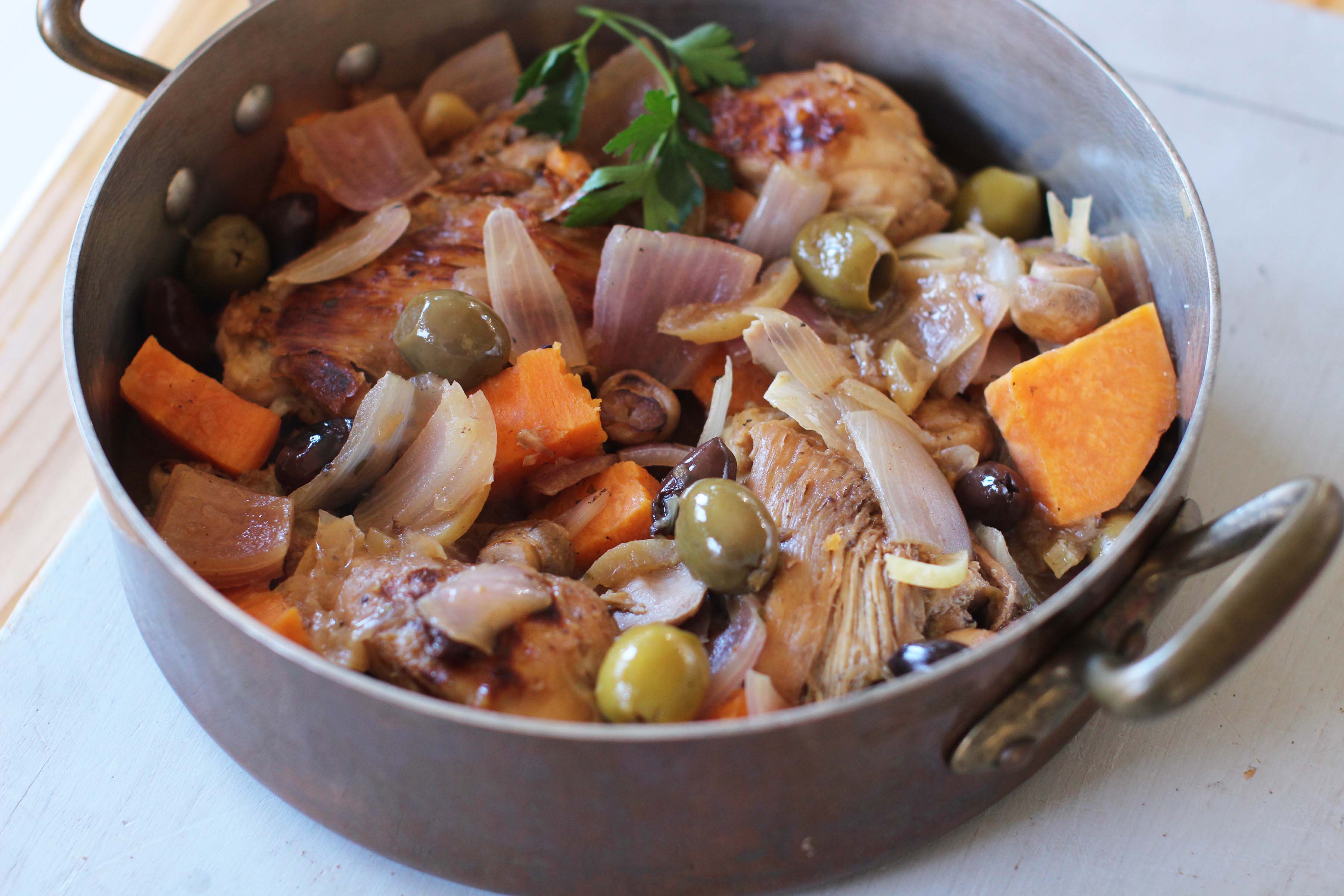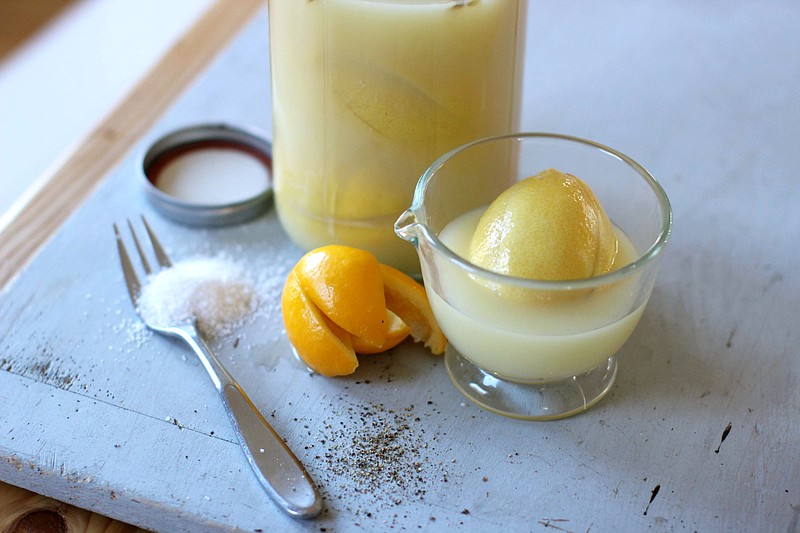While Americans tend to focus on the zest and the juice of the lemon, in the Middle East it is the rind that is prized. That's because they preserve their lemons, softening the rind and essentially pickling it. You won't believe the taste when you try them.
These lemons also make great gifts.
 This Oct. 19, 2015, photo shows a chicken and olive dish using preserved lemons in Concord, N.H. In Moroccan and the Middle Eastern cooking, the lemon is treated much differently than here in the U.S. And its a difference I love. While Americans tend to focus on the zest and the juice of the lemon, in the Middle East it is the rind that is prized. Thats because they preserve their lemons, softening the rind and essentially pickling it with a long soak in a brine of salt and juice. (AP Photo/Matthew Mead)
This Oct. 19, 2015, photo shows a chicken and olive dish using preserved lemons in Concord, N.H. In Moroccan and the Middle Eastern cooking, the lemon is treated much differently than here in the U.S. And its a difference I love. While Americans tend to focus on the zest and the juice of the lemon, in the Middle East it is the rind that is prized. Thats because they preserve their lemons, softening the rind and essentially pickling it with a long soak in a brine of salt and juice. (AP Photo/Matthew Mead)Preserved Lemons
10 lemons
1 or more clean jars to hold the lemons
1/2 cup kosher salt
2 cups lemon juice
Cut the lemons lengthwise into quarters, but stop before the quarters are completely separate, so the lemon holds together at the bottom. Generously salt the insides of the lemons, then press the quarters back together. Sprinkle some salt in the bottom of the jar and pack in the lemons, pressing them down as you go to release some of the juice and sprinkling additional salt between the layers of lemon.
Pour in the juice; there should be enough liquid to completely cover the lemons. Make sure there is a little headroom between the top of the liquid and lemons and the lid of the jar. Seal the jar.
Let sit at room temperature for 3 days, giving the jar a shake or 2 each day to redistribute the salt and liquid around the lemons. After 3 days, refrigerate the jar for at least 3 weeks (4 for best flavor). Give the jar a shake every couple of days as you think of it.
When you are ready to use the lemons, pull one out of the jar, give it a thorough rinse in cold water, then remove the seeds. Mince or sliver the rind to use in recipes. You also can use the flesh, though it will remain a bit salty.
Start to finish: 3 to 4 weeks (10 minutes active). Makes 10 lemons.
